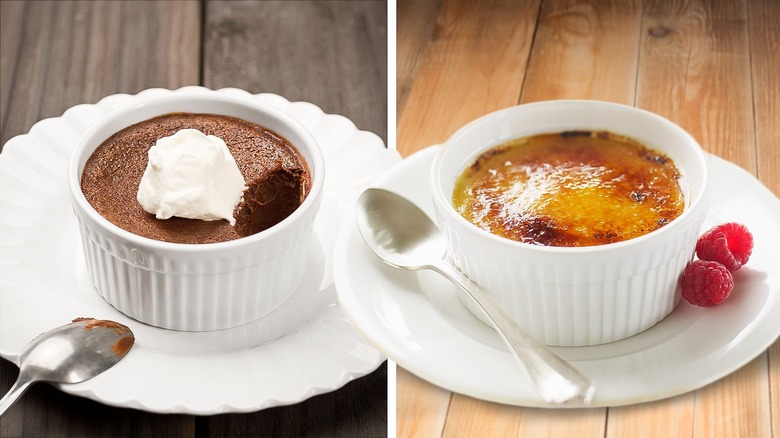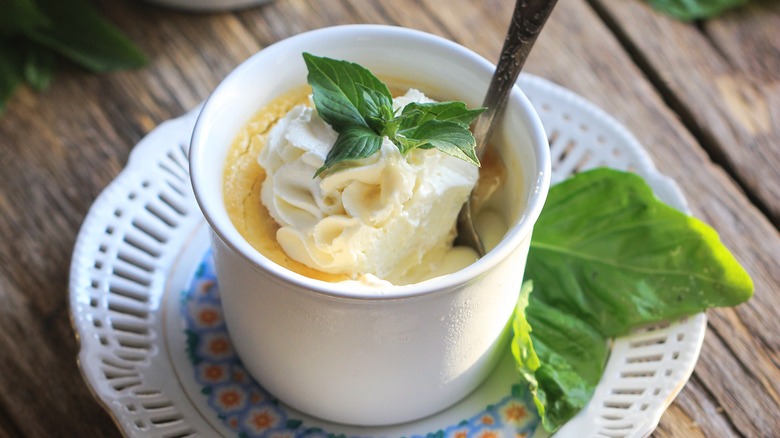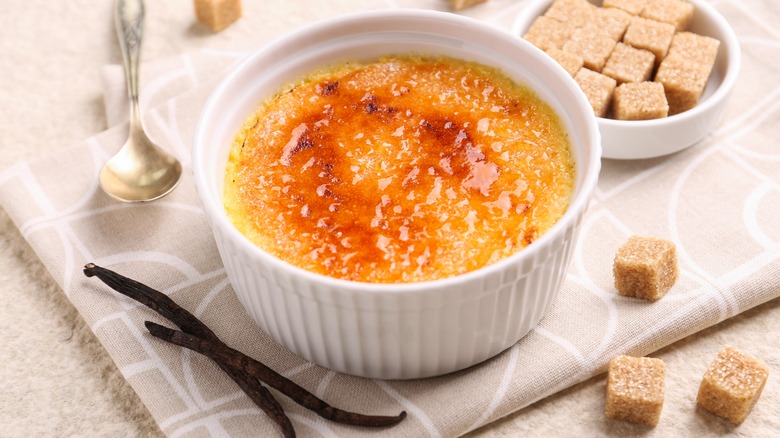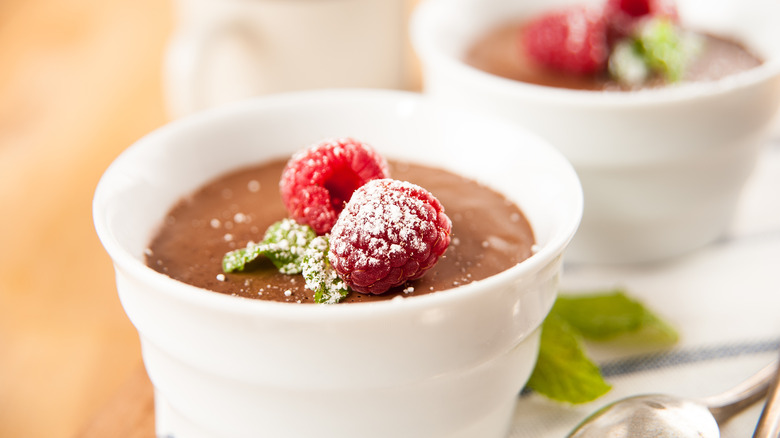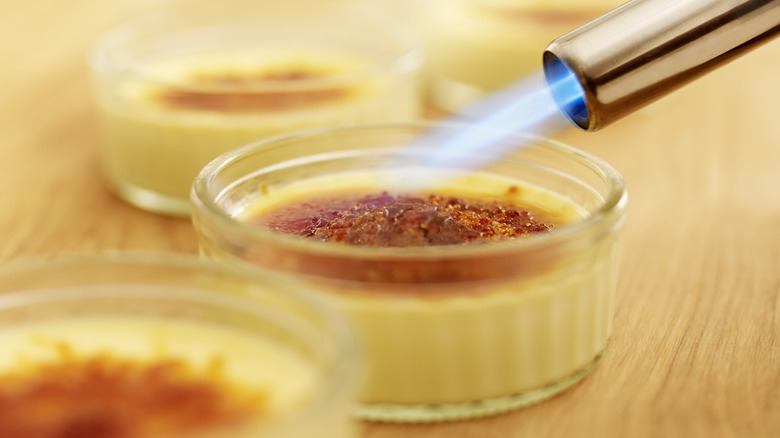Pots De Crème Vs Crème Brûlée: What's The Difference?
When it comes to the end of a good meal, there's nothing that will quite finish off the night in style like a custardy sweet. Whether you serve it hot or cold, there's something about the rich and creamy texture that elevates simple ingredients into a luxurious treat. Nearly every country has its own take on a custard dessert, but pots de crème and, even more so, crème brûlée have become popular additions to restaurant menus and Pinterest pages across the U.S.
If you're confused about what the difference is, you're not alone. On paper, the two are almost identical: individual dishes of custard, served chilled. The key element that separates them (visually at least) is the caramelized crust on the crème brûlée. You may also find that pots de crème have a lighter mouthfeel, as the custard recipe includes less cream. Traditionally, a crème brûlée was made with vanilla, while pots de crème were flavored with chocolate, but recipe variations of both desserts abound, and the flavor of the custard no longer really sets these desserts apart.
What are pots de crème?
Pots de crème literally translates to "pots of cream," with the cream in this case taken to mean custard (crème anglaise in French). And that's really all this dish is — custard that's been baked in an individual pot, then chilled before serving to help it set. The simplicity of the dish means it can be hard to trace its origins, as people have been making sweet custard as we know it since at least the Middle Ages. But the "pots" part of the equation dates to the 17th century, when it became fashionable to serve custard in elaborate ceramic dishes.
These pots often came in sets, with matching lids to help protect the custard during the baking process and, sometimes, a matching tray to serve them at the table. Vintage pots de crème sets with all of the pieces intact are now considered highly collectable. A classic pots de crème recipe is baked, but there are also no-bake recipes that work just as well. This involves cooking the custard completely on the stovetop before decanting into individual dishes to chill.
What is crème brûlée?
Crème brûlée is also a baked custard and also often served in individual dishes, but with a caramelized sugar topping. Just as with pots de crème, the name is also French, meaning "burnt cream," the first recorded use of which was in 1691 by François Massailot, chef to King Louis XIV. Because of this, many considered the dish to have originated in France, but there is evidence of a similar dish (with the signature burnt sugar topping) in England that predate this. And the Spanish crema catalana (which features a custard flavored with citrus and cinnamon), was recorded as far back as the 14th century.
The original French and English recipes featured a plain custard of eggs, cream and sugar, and its unclear when the now-standard vanilla was introduced. Unlike the taller vessels used to serve pots de crème, crème brûlée is usually made in flatter, wider ramekins. This not only makes the cooking time quicker, but also provides a bigger surface area for a higher caramel to custard ratio.
Pots de crème use more eggs but less cream
All custards use eggs, and it's what sets them apart from puddings, but when you're comparing pots de crème to crème brûlée, you'll see a big difference in the ratio of egg to dairy and in the type of dairy used. A classic pot de crème recipe will use equal parts whole milk and heavy cream and up to 6 egg yolks per 2 cups of dairy. This results in a texture that's creamy, pudding-like, and looser than a crème brûlée.
Crème brûlée uses all heavy cream for the dairy component, which gives it incredible richness. It's thickened with either whole eggs or egg yolks (or sometimes a combination of both), but with the equivalent of 4 egg yolks for 2 cups of cream. The texture is not only richer than pots de crème but firmer as well, providing that delightful scoopable quality.
Crème brûlée has a signature topping
There's nothing quite like the satisfying "crack" you get when you break the surface of a crème brûlée, turning a simple custard dish into something of an event. This topping is made by sprinkling sugar over the chilled custard, then caramelizing with a blow torch or, for home cooks, under the broiler. The custard can be made ahead of time, and the crunchy sugar added just before serving.
That's not to say that you'll be missing out on the fun by ordering pots de crème. Although the preparation of the dessert doesn't involve a particular topping, the custard is a blank slate for more inventive options. Whipped cream is a classic option for a chocolate pot de crème, but you can get creative by introducing flavors and textures to complement your custard. Our maple pot de crème is topped with a boozy bourbon whipped cream, while the chocolate orange variation is decadently finished with mascarpone and candied blood orange.
